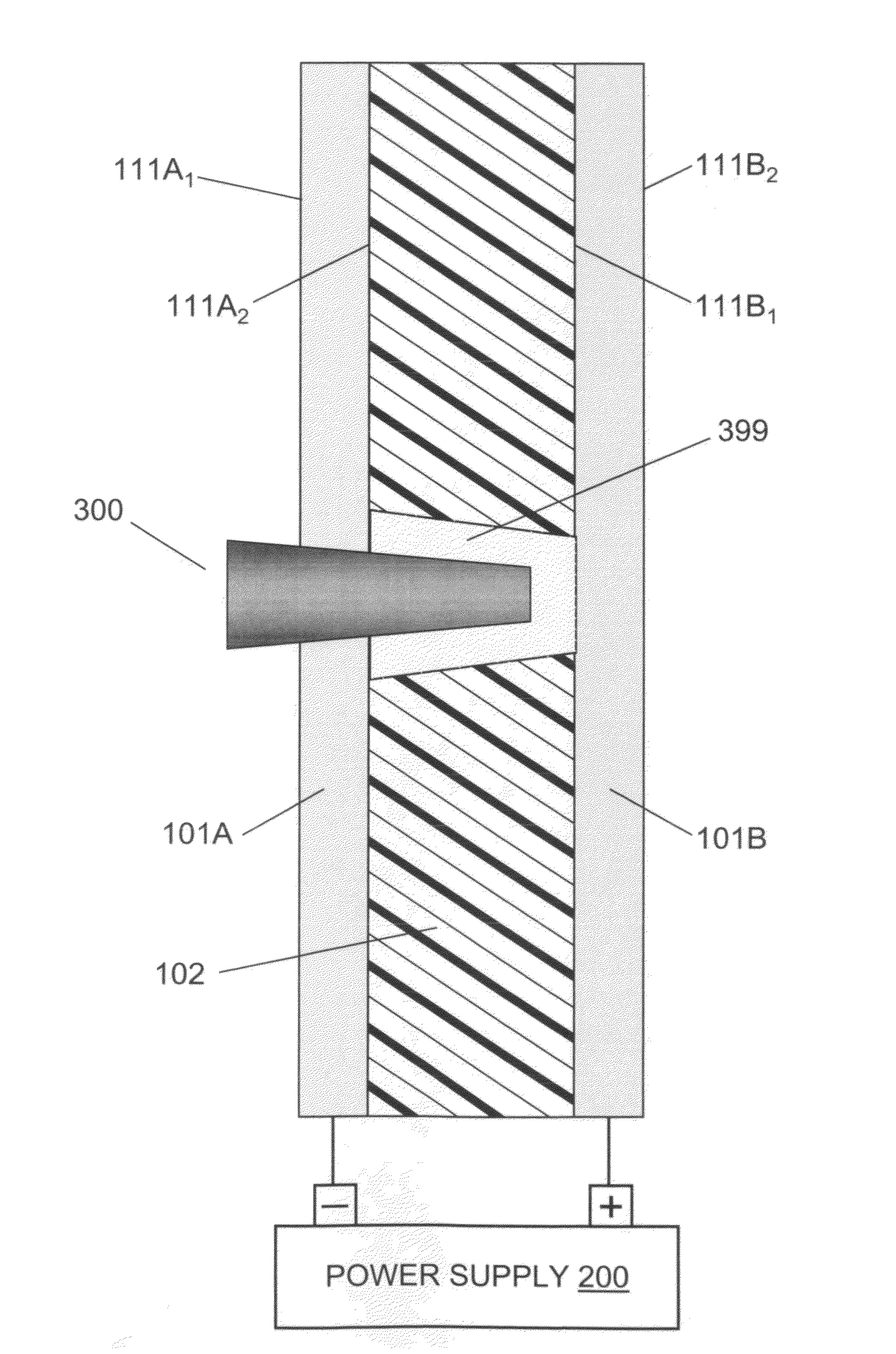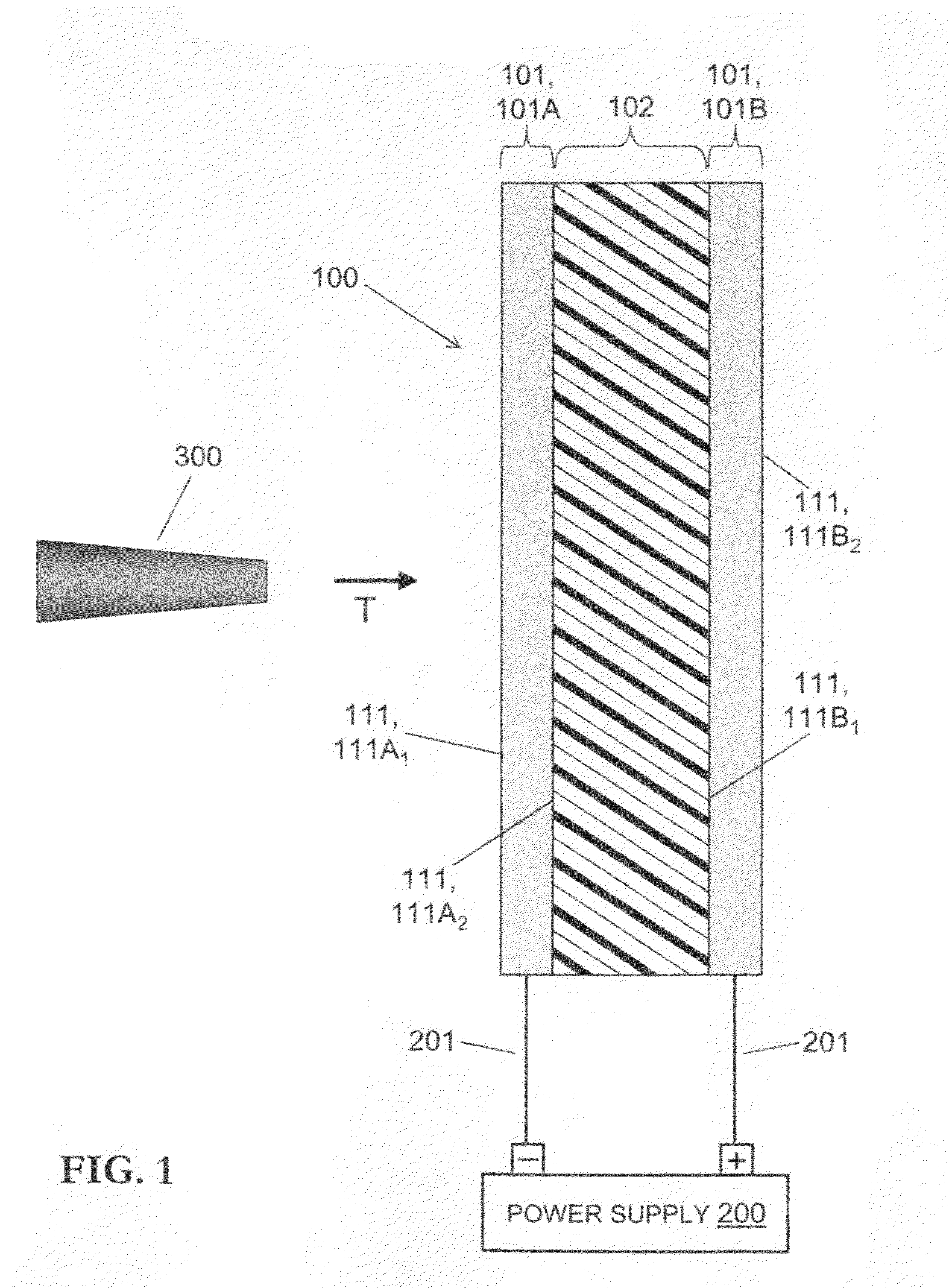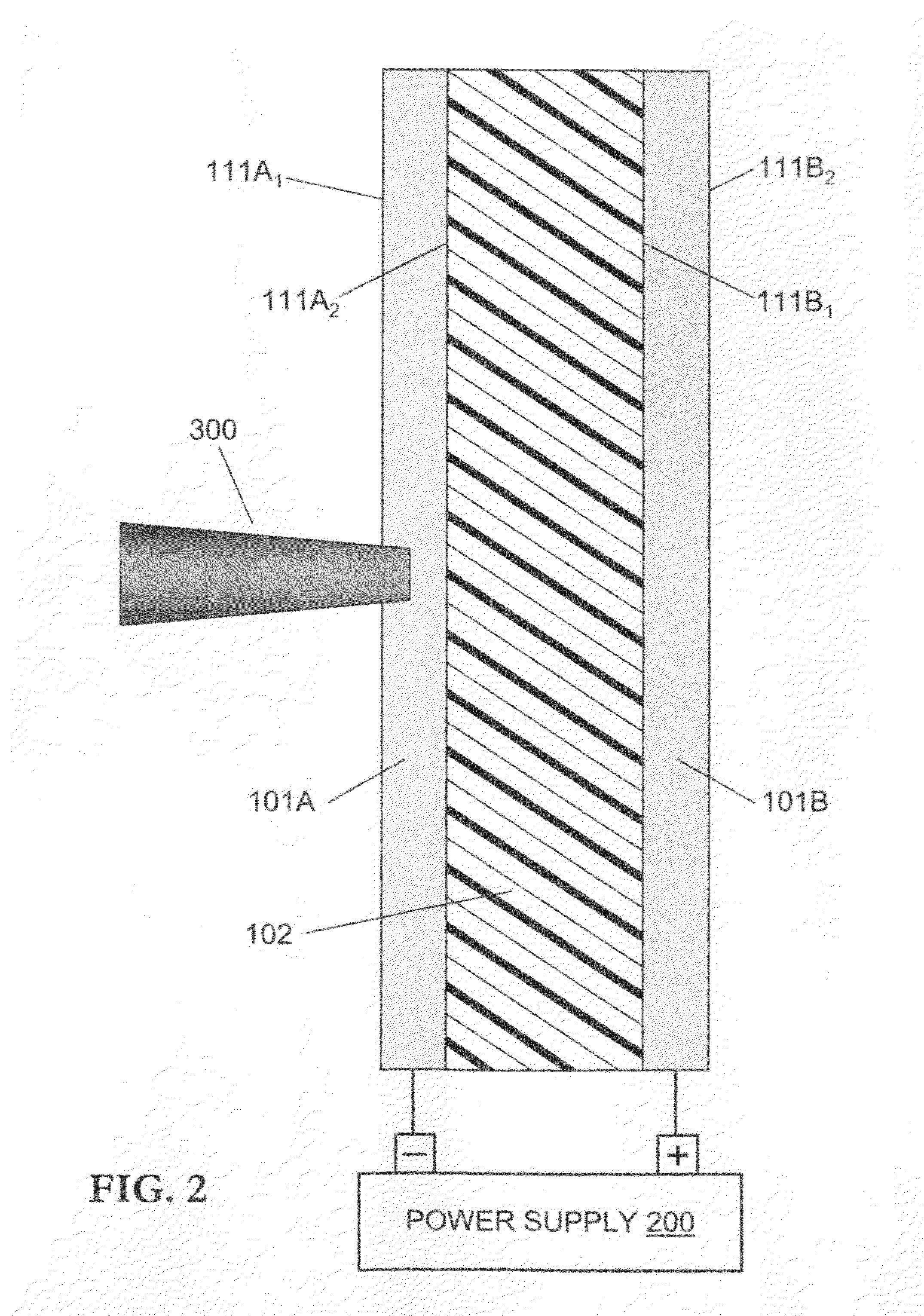Electrical and elastomeric disruption of high-velocity projectiles
a technology of elastomeric and high-velocity projectiles, applied in the direction of reactive armour, other domestic articles, protective garments, etc., can solve the problems of large solid-metallic/all-metallic armor, heavy steel-type armor, and inability to meet the requirements of many applications, so as to achieve greater protection for vehicular occupants.
- Summary
- Abstract
- Description
- Claims
- Application Information
AI Technical Summary
Benefits of technology
Problems solved by technology
Method used
Image
Examples
Embodiment Construction
[0029]Referring now to FIG. 1, the inventive armor system includes armor structure 100, electrical power supply 200, and electrical conductors (e.g., wires) 201. Electrical power supply 200 is electrically connected, via electrical conductors 201, to the two plates 101, viz., plate 101A and plate 101B. Plates 101A and 101B respectively constitute the negative and positive electrodes of an open (but closable) circuit described by plates 101A and 101B, conductors 201, and power supply 200. Armor structure 100 represents a composite laminar material system—more specifically, a sandwich construction—that includes two outside rigid electrically conductive (e.g., metallic) plates 101 and, therebetween, a core layer of highly rate-sensitive elastomer 102.
[0030]Plates 101A and 101B are shown to be planar, parallel, and geometrically congruent. Plate 101A, the front (strike) plate relative to projectile 300, has a flat front (strike) surface 111A1 and a flat back surface 111A2. Plate 101A, t...
PUM
| Property | Measurement | Unit |
|---|---|---|
| Young's modulus | aaaaa | aaaaa |
| electrical connectivity | aaaaa | aaaaa |
| strain rate | aaaaa | aaaaa |
Abstract
Description
Claims
Application Information
 Login to View More
Login to View More - R&D
- Intellectual Property
- Life Sciences
- Materials
- Tech Scout
- Unparalleled Data Quality
- Higher Quality Content
- 60% Fewer Hallucinations
Browse by: Latest US Patents, China's latest patents, Technical Efficacy Thesaurus, Application Domain, Technology Topic, Popular Technical Reports.
© 2025 PatSnap. All rights reserved.Legal|Privacy policy|Modern Slavery Act Transparency Statement|Sitemap|About US| Contact US: help@patsnap.com



